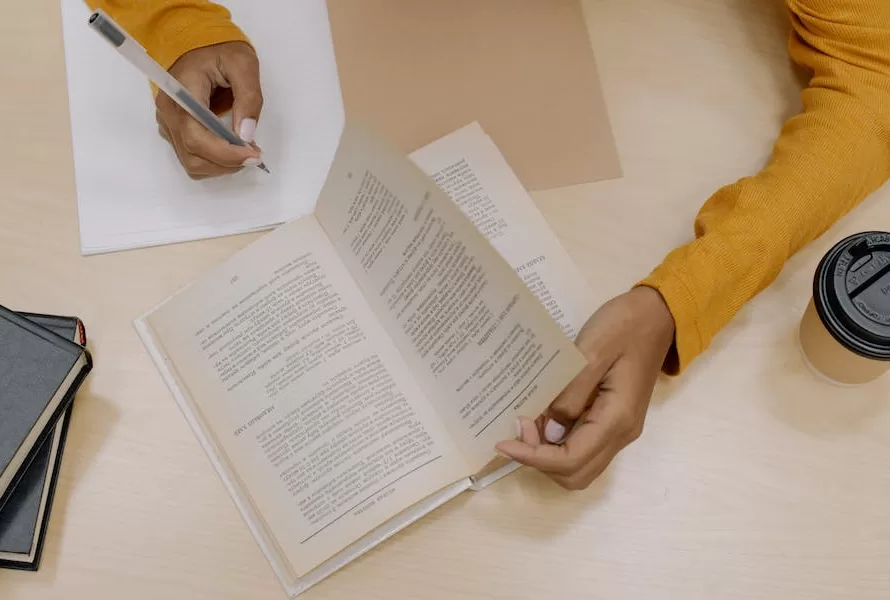Become an Assembly Expert
Are you ready to take your puzzle assembly skills to the next level? If so, you’re in the right place. In this article, we will guide you from being a beginner to becoming an expert in the art of jigsaw puzzle assembly. Whether you’re a casual puzzle enthusiast or a seasoned puzzle addict, we’ve got you covered.
From choosing the perfect puzzle to mastering the techniques of sorting and assembling, we will provide you with step-by-step instructions and helpful tips. You’ll learn how to tackle puzzles of various sizes and difficulty levels, making every piece fit seamlessly into place.
Our brand understands the joy and sense of accomplishment that comes from completing a challenging puzzle. That is why we have crafted this comprehensive guide using our expertise and passion for puzzles. So get ready to sharpen your puzzle-solving skills, unlock your full potential, and become a true jigsaw puzzle master.
Join us on this exciting journey, and let’s embark on the path to puzzle perfection together.
Benefits of assembling jigsaw puzzles
Jigsaw puzzles offer numerous benefits that go beyond mere entertainment. They are a great way to relax and de-stress after a long day, allowing you to escape from the pressures of everyday life. Assembling puzzles also helps improve cognitive skills, such as problem-solving, critical thinking, and spatial reasoning. It exercises both sides of your brain, enhancing your memory and concentration abilities. Additionally, completing a puzzle provides a sense of accomplishment and satisfaction, boosting your mood and self-confidence. So, get ready to experience the many benefits of assembling jigsaw puzzles.
Different types of jigsaw puzzles
Jigsaw puzzles come in various types, catering to different preferences and skill levels. Traditional puzzles feature classic images, landscapes, or famous works of art. They are great for beginners and those who enjoy a more relaxed puzzle-solving experience. For a challenge, you can opt for 3D puzzles, which require assembling intricate structures or reproducing famous landmarks. Puzzle enthusiasts looking for an extra challenge can try puzzle boxes or mystery puzzles, where solving the puzzle unveils a hidden compartment or image. No matter your preference, there’s a jigsaw puzzle type that suits your taste and skill level.
Essential tools and materials for assembling jigsaw puzzles
Before diving into the world of jigsaw puzzles, it’s important to have the right tools and materials. Start with a sturdy puzzle board or mat that provides a smooth surface for assembling your puzzles. This will protect your puzzles from damage and make it easier to move them if needed. A puzzle roll-up mat is also a great option for those who want to store their puzzles in progress. Invest in a high-quality puzzle glue to preserve your completed puzzles, allowing you to display them as works of art. Lastly, don’t forget about good lighting and a comfortable seating arrangement to ensure an enjoyable puzzle assembly experience.
Step-by-step guide to assembling a jigsaw puzzle
Now that you have your puzzle and essential tools ready, let’s dive into the step-by-step process of assembling a jigsaw puzzle. Start by pouring out the puzzle pieces onto a clean, flat surface. Sort the pieces by edge pieces and interior pieces to make the assembly process more manageable. Begin by assembling the puzzle’s border using the edge pieces, followed by grouping and assembling pieces based on colors, patterns, or distinctive features. Gradually fill in the remaining pieces until the puzzle is complete. Don’t forget to take breaks, step back, and admire your progress as you go along. With practice, you’ll become more efficient at solving puzzles.
Tips and tricks for solving challenging puzzles
As you progress in your puzzle-solving journey, you’ll encounter puzzles that present more challenges. Here are some tips and tricks to help you tackle these difficult puzzles. Start by identifying the puzzle’s overall theme or pattern, such as color gradients or repeating shapes. Sort the pieces accordingly to make the assembly process smoother. Pay attention to the shape of the puzzle pieces, as irregular shapes can provide valuable clues for correct placement. Don’t be afraid to rotate and try different combinations of pieces. Using reference images or the puzzle’s box cover can also be helpful when you’re stuck. Remember, patience and perseverance are key when solving challenging puzzles.
Advanced techniques for expert-level puzzlers
For those who have mastered the basics and are looking to challenge themselves further, here are some advanced techniques to elevate your puzzle-solving skills. Start by working on puzzles with larger piece counts or complex designs. This will test your ability to focus and manage multiple sections of the puzzle simultaneously. Try solving puzzles without referring to the picture on the box cover, relying solely on the shapes and patterns of the pieces. Another technique is to assemble the puzzle by sorting and connecting smaller clusters of pieces, then combining them to form larger sections. As you become more experienced, you can even attempt puzzles with irregular edges or no straight borders. Stay persistent, and you’ll become an expert-level puzzler in no time.
Maintaining and preserving completed jigsaw puzzles
Once you’ve completed a jigsaw puzzle, you’ll want to preserve and showcase your masterpiece. Start by carefully sliding a piece of wax paper or plastic wrap under the puzzle to prevent it from sticking to the surface. Gently flip the puzzle over and apply a puzzle glue or adhesive sheet to the backside. Ensure that the glue is evenly spread across the puzzle’s surface, paying extra attention to the edges. Allow the glue to dry completely, following the manufacturer’s instructions. Once dry, you can mount your puzzle on a foam board or frame it for display. Don’t forget to clean and dust your completed puzzles regularly to keep them looking their best.
Online resources and communities for puzzle enthusiasts
The puzzle community is vast and filled with fellow enthusiasts eager to share their love for puzzles. Online resources and communities offer a wealth of information, tips, and even virtual puzzle challenges. Websites and apps provide a wide range of puzzles to choose from, allowing you to explore new designs and challenge yourself beyond physical puzzles. Social media platforms have dedicated puzzle communities where you can connect with like-minded individuals, share your progress, and seek advice. Online forums and blogs are also great sources for puzzle recommendations, reviews, and discussions. Embrace the online puzzle community and expand your puzzle-solving horizons.
Conclusion: Embracing the joy and satisfaction of completing jigsaw puzzles
Congratulations! You’ve reached the end of our comprehensive guide to mastering the art of jigsaw puzzle assembly. We hope this article has provided you with the knowledge and inspiration needed to take your puzzle-solving skills to new heights. Remember, assembling jigsaw puzzles is not just a hobby; it’s a journey filled with joy, satisfaction, and numerous cognitive benefits. So, gather your puzzles, set up your workspace, and embark on this exciting adventure. Whether you’re a beginner or an expert, there’s always a new puzzle waiting to be solved and another level of mastery to achieve. Happy puzzling!
Mastering the Art of Sudoku: Beginner’s Guide to Solving Puzzles
Have you ever felt overwhelmed by a Sudoku puzzle with its grid of numbers and empty squares? Don’t worry, you’re not alone. Mastering the art of solving Sudoku puzzles may seem daunting at first, but with the right techniques and strategies, anyone can become a puzzle-solving pro. In this beginner’s guide, we will break down the steps to conquer Sudoku and provide you with the tools you need to succeed.
Whether you’re a Sudoku enthusiast looking to sharpen your skills or a complete beginner wanting to learn the basics, this guide will provide you with a solid foundation. We will walk you through the rules of Sudoku, teach you how to navigate the grid effectively, and share tips and tricks to aid in your solving journey.
By the end of this guide, you’ll be equipped with the knowledge and confidence to tackle even the most challenging Sudoku puzzles. So grab a pencil, get ready to sharpen your mind, and let’s dive into the world of Sudoku together.
Get ready to unlock the secrets of Sudoku and become a master puzzle solver. Let’s get started!
How to play Sudoku
Sudoku is a logic-based number puzzle that consists of a 9×9 grid divided into nine 3×3 sub-grids. The objective of the game is to fill each empty square with a number from 1 to 9, ensuring that each row, column, and sub-grid contains every number exactly once.
To start playing Sudoku, it’s important to understand the basic rules:
- Each row, column, and sub-grid must contain the numbers 1 to 9 without repetition.
- A Sudoku puzzle usually comes with some pre-filled numbers, which serve as clues to help you get started.
- The puzzle should have only one valid solution.
Now that you have a basic understanding of the rules, let’s move on to understanding Sudoku grids and how to navigate them effectively.
Understanding Sudoku grids and rules
The Sudoku grid is made up of 81 squares, arranged in a 9×9 format. Each square can either be empty or filled with a number from 1 to 9. The grid is further divided into nine 3×3 sub-grids, each containing nine squares.
When solving Sudoku puzzles, it’s important to keep the following rules in mind:
- Each row must contain all the numbers from 1 to 9 without repetition.
- Each column must contain all the numbers from 1 to 9 without repetition.
- Each of the nine 3×3 sub-grids must contain all the numbers from 1 to 9 without repetition.
By following these rules, you can ensure that you’re on the right track while solving Sudoku puzzles. Now that you understand the basic structure of Sudoku grids, let’s move on to learning some solving techniques specifically designed for beginners.
Solving techniques for beginners
As a beginner, it’s essential to start with simple solving techniques before diving into more advanced strategies. These techniques will help you gain confidence and build a solid foundation for solving Sudoku puzzles.
- Scanning: Scanning is the most basic technique used in Sudoku. Start by scanning each row, column, and sub-grid to identify any numbers that can only fit in one particular square. Once you find such a number, fill it in and move on to the next.
- Crosshatching: Crosshatching involves scanning each row and column to determine which numbers are missing. By identifying the missing numbers, you can start filling in the empty squares one by one.
- Pencil Marking: Pencil marking is a technique that involves placing possible numbers in the corners of empty squares to keep track of potential candidates. As you eliminate possibilities, erase the corresponding pencil marks until you find the correct number.
These three techniques are great starting points for beginners. They allow you to make progress in solving Sudoku puzzles without getting overwhelmed. Now that you have a grasp of the basic techniques, let’s dive into a step-by-step guide to solving a Sudoku puzzle.
Step-by-step guide to solving a Sudoku puzzle
- Start with the clues: Look for any pre-filled numbers in the puzzle. Start by filling in those numbers in the corresponding squares.
- Scan rows, columns, and sub-grids: Scan each row, column, and sub-grid to identify any numbers that can only fit in one particular square. Fill in those numbers and move on to the next.
- Crosshatching: Look for missing numbers in each row and column. Fill in the empty squares with those missing numbers.
- Pencil marking: Use pencil marks to keep track of potential candidates for each empty square. As you eliminate possibilities, erase the corresponding pencil marks until you find the correct number.
- Repeat steps 2-4: Keep repeating steps 2-4 until you fill in all the squares and solve the puzzle.
By following this step-by-step guide, you’ll be able to solve Sudoku puzzles with ease. However, it’s important to be aware of some common mistakes that beginners tend to make.
Common mistakes to avoid while solving Sudoku
Sudoku puzzles can be tricky, especially for beginners. Here are some common mistakes to avoid while solving Sudoku:
- Guessing: Avoid guessing numbers randomly without any logical reasoning. This can lead to incorrect solutions and frustration.
- Not double-checking: Always double-check your work to ensure that each row, column, and sub-grid contains the numbers 1 to 9 without repetition.
- Skipping steps: Don’t skip any of the solving techniques mentioned earlier. Each technique serves a purpose and can help you progress towards solving the puzzle.
- Getting stuck: If you find yourself stuck and unable to make progress, take a break and come back to the puzzle later with a fresh mind. Sometimes, a new perspective can help you spot something you missed before.
By avoiding these common mistakes, you’ll be able to solve Sudoku puzzles more efficiently. Additionally, here are some tips to help you improve your Sudoku-solving skills.
Tips for improving Sudoku-solving skills
- Practice regularly: The more you practice, the better you’ll become at solving Sudoku puzzles. Set aside a dedicated time each day to solve puzzles and challenge yourself with increasingly difficult ones.
- Start with easy puzzles: If you’re a beginner, start with easy puzzles and gradually work your way up to more difficult ones. This will help you build confidence and improve your solving speed.
- Analyze different strategies: Explore different solving techniques and strategies used by experienced Sudoku solvers. Learn from their approach and incorporate their methods into your own solving process.
- Join online communities: Engage with other Sudoku enthusiasts and join online communities where you can discuss strategies, share tips, and challenge each other. Learning from others can greatly enhance your solving skills.
By implementing these tips and incorporating them into your practice routine, you’ll see a significant improvement in your Sudoku-solving abilities. If you’re looking for more advanced techniques to tackle challenging puzzles, read on.



Advanced Sudoku-solving techniques
Once you’ve mastered the basic solving techniques, you can move on to more advanced strategies. These techniques are designed to help you solve even the most challenging Sudoku puzzles.
- Naked Pairs: Look for two squares in a row, column, or sub-grid that have the same two possible numbers. If these two numbers can only fit in these two squares, you can eliminate them as possibilities for other squares in the same row, column, or sub-grid.
- Hidden Pairs: Hidden pairs occur when two numbers appear only in two squares within a row, column, or sub-grid. By identifying these hidden pairs, you can eliminate those numbers as possibilities for other squares in the same row, column, or sub-grid.
- X-Wing: X-Wing is a technique used to eliminate possibilities by identifying a pattern of squares that have the same two possible numbers. If these squares form the corners of a rectangle, you can eliminate those numbers as possibilities for other squares in the same row or column.
These advanced techniques require more practice and observation but can significantly enhance your solving abilities. As you become more comfortable with these strategies, you’ll be able to tackle even the most challenging Sudoku puzzles with ease.
Online resources for Sudoku puzzles and practice
If you’re looking for a variety of Sudoku puzzles to practice and improve your skills, there are several online resources available. Here are a few popular platforms worth exploring:
- Sudoku.com: Sudoku.com offers a wide range of Sudoku puzzles, from easy to expert levels. You can play online or print out puzzles to solve offline.
- Sudoku Kingdom: Sudoku Kingdom provides daily Sudoku puzzles with different difficulty levels. You can also track your solving time and compete with other players.
- Web Sudoku: Web Sudoku offers a collection of Sudoku puzzles, including a daily puzzle, killer Sudoku, and Sudoku X. You can choose the difficulty level and solve puzzles online.
These online resources can provide you with a never-ending supply of Sudoku puzzles to practice and sharpen your skills. Remember, the key to mastering Sudoku is consistent practice and a willingness to challenge yourself with increasingly difficult puzzles.
Enjoying the journey of mastering Sudoku
In conclusion, Sudoku is a challenging yet rewarding puzzle game that can sharpen your logical thinking and problem-solving skills. By following the rules, learning the basic techniques, and practicing regularly, you can become a master puzzle solver.
Start with the simple techniques and gradually progress to more advanced strategies. Remember to avoid common mistakes, seek out tips from experienced solvers, and join online communities to enhance your skills. With dedication and perseverance, you’ll be able to conquer even the most challenging Sudoku Puzzles.
.
So, grab a pencil, start practicing, and enjoy the journey of mastering Sudoku. Happy solving!




